Terry campanula: varieties, cultivation, breeding
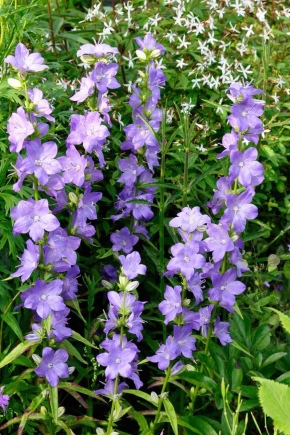
Indoor flowers create coziness and beauty in the room. Campanula looks especially gentle. This small plant with beautiful flowers, referred to among gardeners as "groom" and "bride", is considered a symbol of family happiness. According to popular belief, if you give a campanula to the newlyweds, then they will always have love, prosperity and peace in their family.
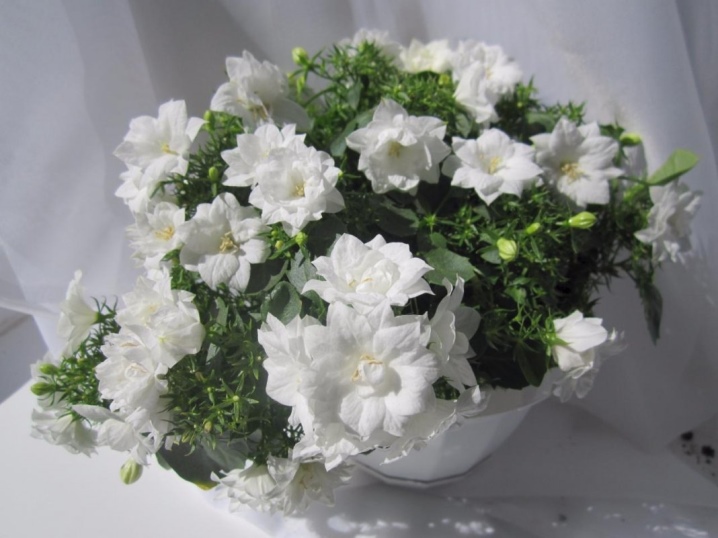
Description
Campanula is a perennial herb belonging to the bellflower family. People often call it a bell. In their natural environment, bells grow in areas of Western Europe, Asia, the Caucasus and North America. They mainly grow in foothills, meadows, steppes and gorges. The plant adapts well to different climatic conditions and is quite hardy.

Botanists have identified more than 300 varieties of this plant. This also includes cultivars that breeders have bred.
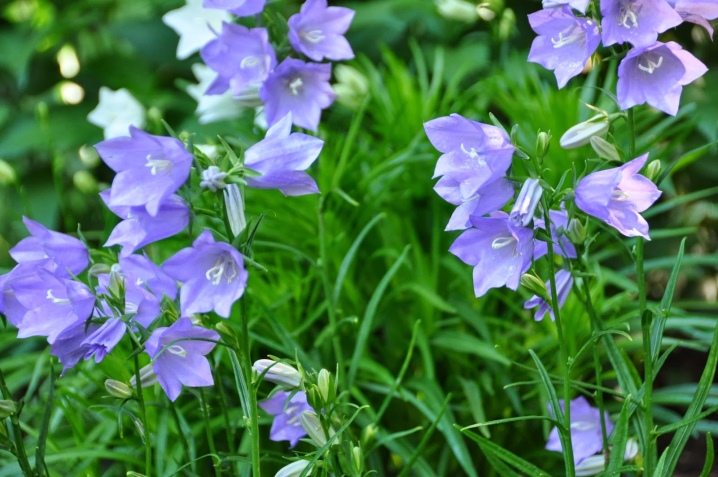
Varieties
The variety of campanula hybrids will not leave indifferent any grower. Among the bells, there are dwarf and tall forms, a spoon-leaved bell, double species, with different colors of flowers. But at home, it is recommended to grow an equal-leaved bell. In the wild, this plant is found only on Mount Capo Noli, which is located in the Alps. But through long-term selection, botanists have bred many excellent varieties.
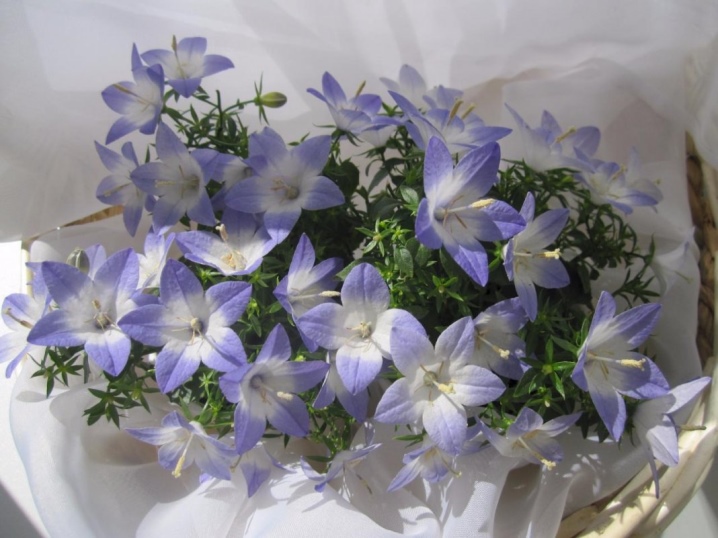
- Mayia is the groom. He is also called "lover". View of equal-leaved bells. It is a blue-flowered plant native to southern Europe. Its height is about 30 cm, there are small heart-shaped leaf blades and 5-leafed flowers up to 4 cm in diameter. The leaves of the "groom" are distinguished by a rich dark green color. Flowering time from mid-July.
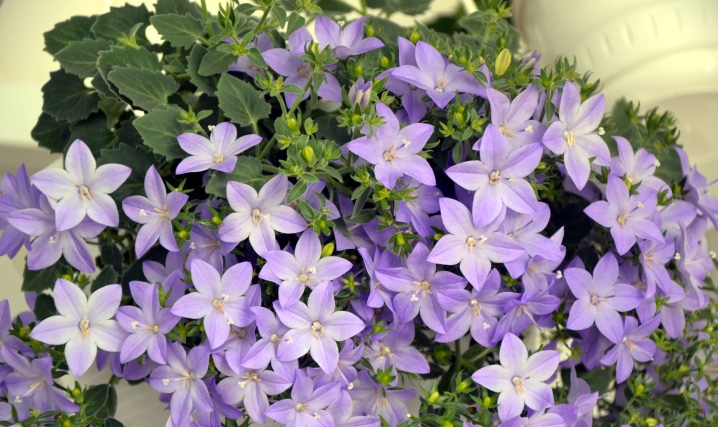
- Alba is "the bride". Another kind of equal-leaved bells, but with snow-white flowers. Alba is a bred subspecies. Stems reach a height of 25 cm, small heart-shaped leaves and white flowers in the panicle inflorescence.
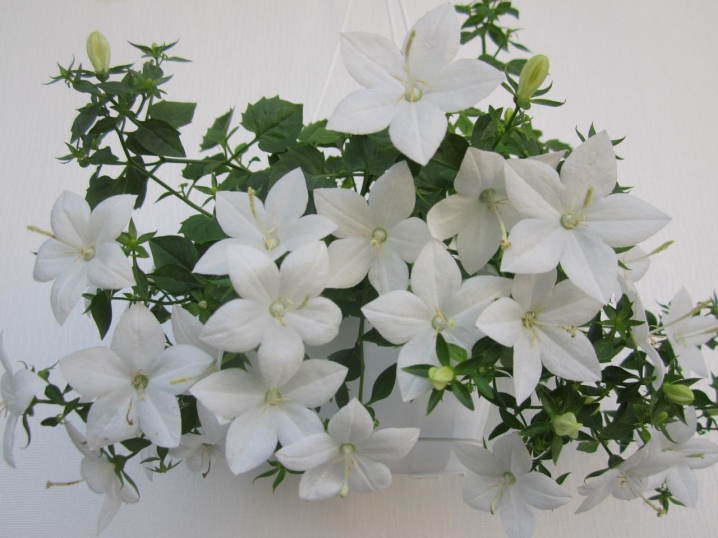
- Two-tone - bicolor "Berlin". Perennial non-double variety, compact bushes, up to 15 cm tall. Flowers are large, 5-petaled, two-colored. The edges are painted in a delicate lavender color, and the center is white. Bicolor is appreciated for its abundant and long flowering. The bicolor variety has several more varieties: "Star" - with pale blue inflorescences, "Blue" - with double white, "White" - with white ones.
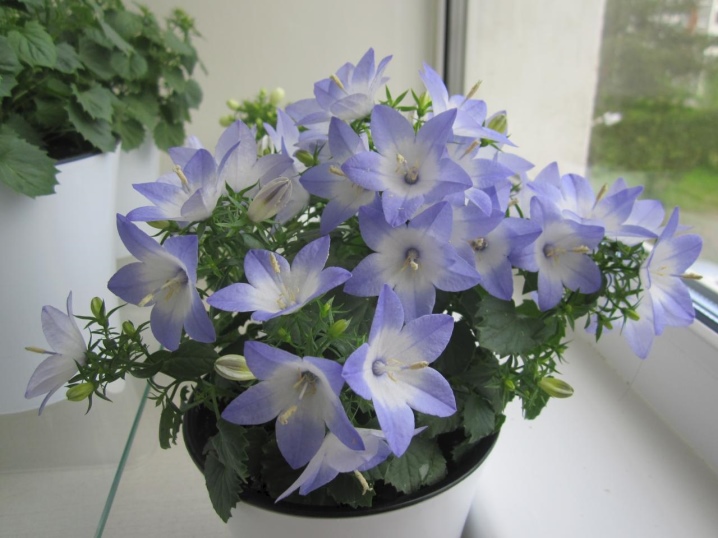
- Mix - "Blauranka". The main distinguishing feature from other varieties is large leaves and flowers. Due to their compactness, these flowers are frequent guests in apartment flower beds. The color of the petals is pale blue.

- Terry - mini-variety "Blue Bali". Plants with fluffy flowers are quite common in stores. Small stems (up to 15 cm) form compact bushes, and in combination with double lavender-blue flowers form a very beautiful composition. The variety is distinguished by abundant and long flowering.
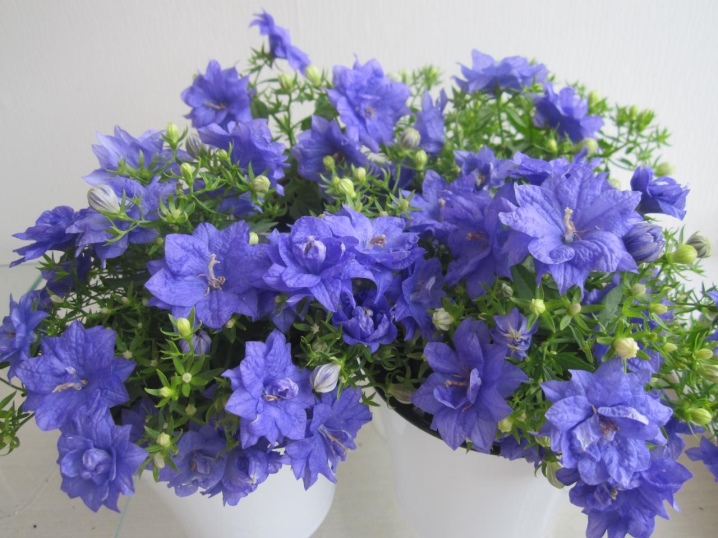
- Alpine. This variety is often used in landscape design. The plants are very miniature - only 5-10 cm tall, so in the compositions the Alpine campanula is placed as a carpet plant. It blooms for a long time and abundantly with bright blue flowers.

- Carpathian. Tall plant for the type of bells - almost 30 cm tall. The leaves are small, ovoid, collected in a basal rosette. Flowering time from June to late August, flowers come in three shades - purple, blue and white. The Carpathian Campanula is used to decorate flower beds in personal plots.
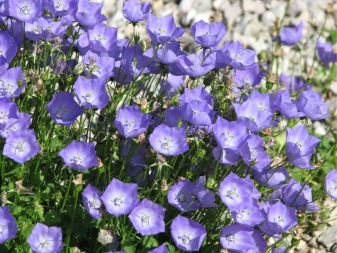
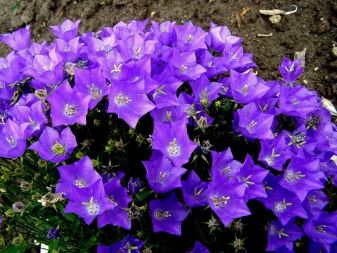
- Spoon-leaved. A beautiful plant with bright flowers of different shades - from white to bright blue. The stems are creeping, 15-20 cm long, the leaves are small - 3-5 cm. The bushes form a thick carpet in the flowerbed and are perfect for decorating borders and large meadows.
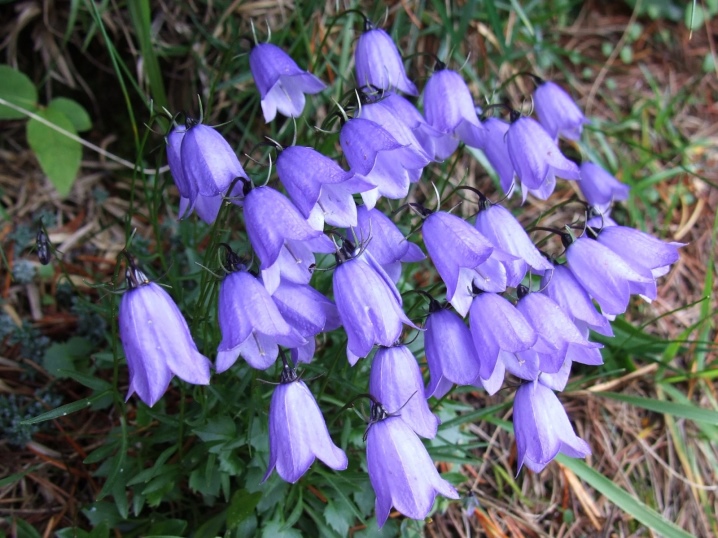
How to plant correctly?
In its natural environment, the bell grows mainly in the foothill areas, characterized by loose and rarefied soil. The varieties bred by selection have the same soil requirements.
Loose, well-drained soil is preferable for planting. Therefore, a mixture of sand, leaves and peat is perfect.

In a specialized store, you can buy a universal primer for flowers, it has all the necessary properties.
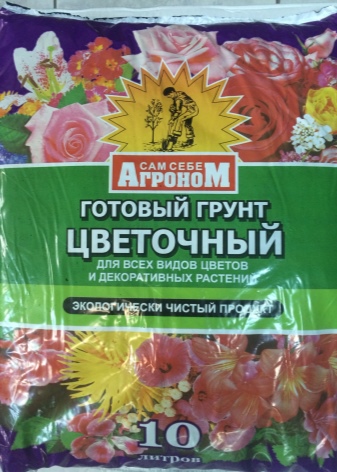
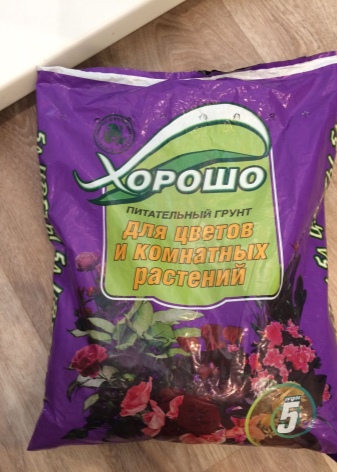
In open ground
In the spring, when the soil warms up to + 10 ... 12 degrees, select and dig a site under the campanula. Level the soil and dig holes 15-20 cm deep at a distance of 25-50 cm depending on the size of the bush.
Gently remove the plant from the pot or container along with the soil. Do not shake the roots off the ground. Place the campanula in the hole exactly in the center and sprinkle with earth. Compact and level the soil around the stems, pour warm water.
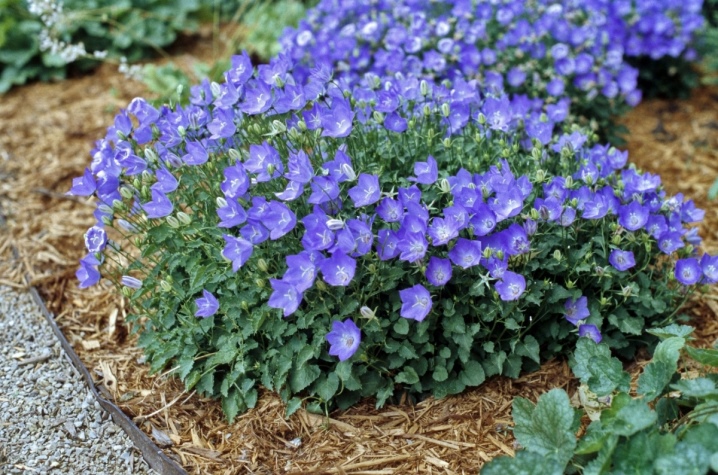
Water the flower bed abundantly for the first week.
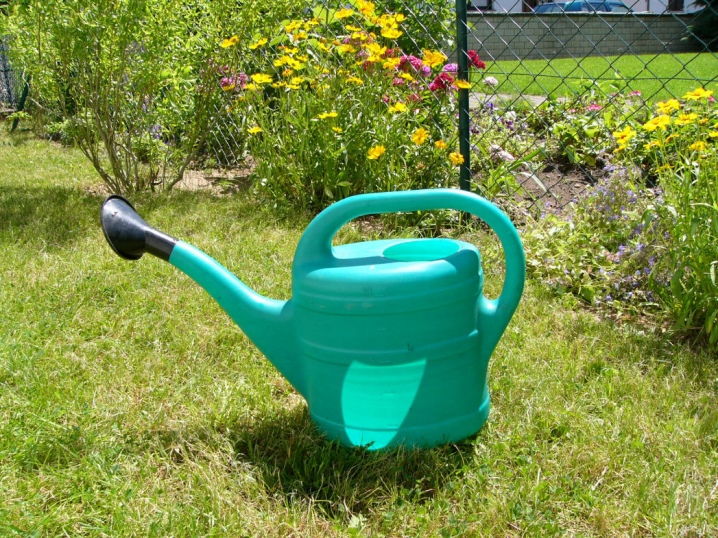
Indoor flower transplant
After buying a potted campanula, choose a place for it in the room that does not get direct sunlight. Lighting should be diffused. Leave the flower in an old planter for 7-10 days to acclimatize.

After 10 days, you can transplant Campanula into a permanent pot. The planter should be quite voluminous, because despite its small size, the plant has a powerful root system. Pour a little expanded clay into a new planter on the bottom, fill a third with nutritious soil. Make a small indentation in the middle of the pot. Carefully remove the plant from the old pot after watering it well and letting it stand for 30 minutes. It is not necessary to clean the roots of the campanula from the earth.
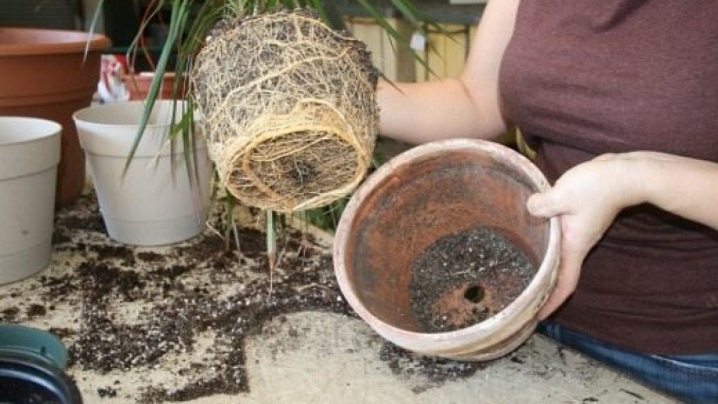
The transplant is carried out by the transshipment method. Place the plant with roots and earthy clod in a new pot and sprinkle with earth on top. Level and compact the soil around the stems, then water. Put the planter back in its original place.
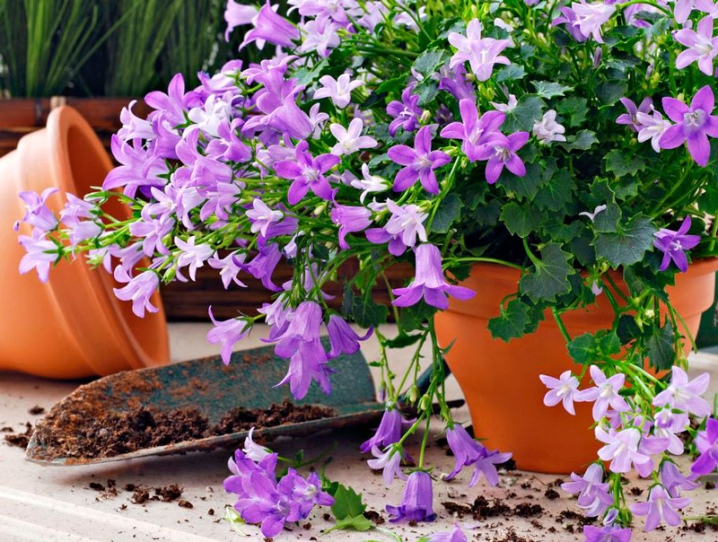
Follow-up care
The bell as a whole is an unpretentious and non-capricious plant. He adapts well to new conditions. But like any plant, Campanula requires care.

Watering
On hot summer days, plants need frequent watering. He needs daily small portions of warm water during dry and hot periods. In winter, watering is practically not necessary for a houseplant - only spraying.
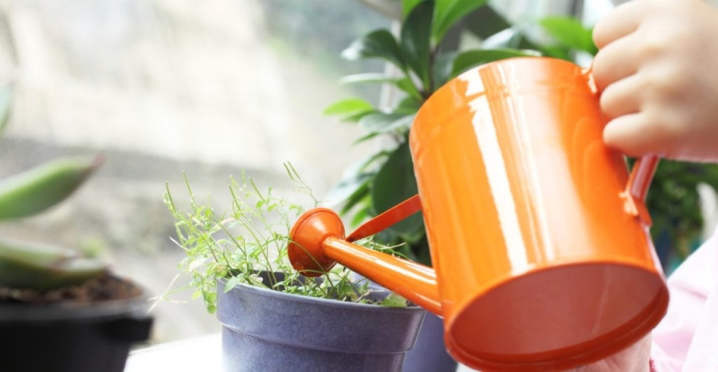
Temperature requirements
The plant does not tolerate heat well, therefore the optimal growth conditions for it will be + 22 ... 23 degrees in summer and + 12 ... 15 in winter.

Weeding
In a street flower garden, it is necessary to maintain cleanliness and weed in time to prevent waterlogging of the soil and rotting of the roots. In flower pots, you also need to remove weeds and loosen the soil.
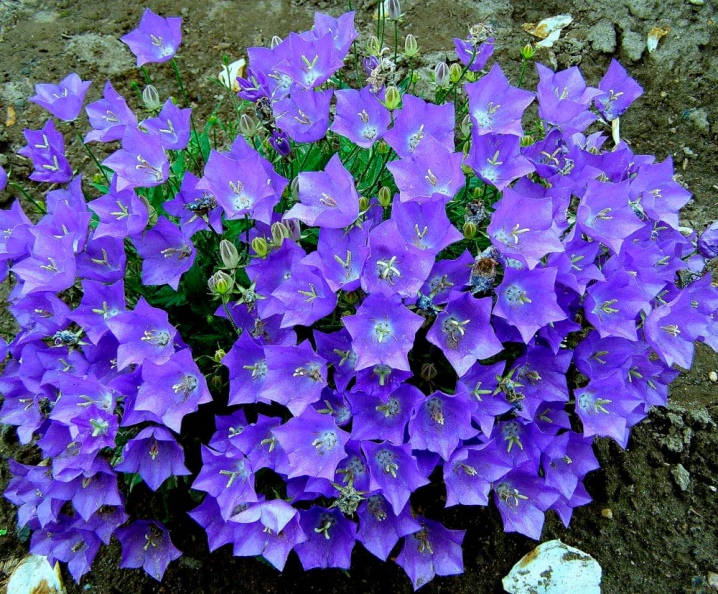
You should not feed the plants during the period of planting cuttings and their rooting. Then you can make one top dressing with any flower fertilizer.
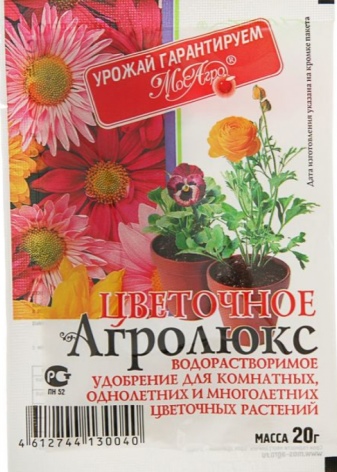

Pruning
Twice a year - in spring and autumn - be sure to remove dried, too thin and elongated, as well as too thick branches. Such stems, in addition to dried ones, can be used for cuttings. It is necessary to change the soil once a year, as the powerful roots quickly deplete it.

Preparing for winter
In autumn, flowering ends, and growth slows down, then the flower is prepared for wintering. Excess elongated shoots are cut off, the cuts are disinfected. The plant is removed to a cool place. In the open ground, flower beds with plants are sprinkled with earth, then sprinkled with dry leaves.

Disease and pest control
Due to a violation of the rules for caring for a plant, root rot can affect it. This is due to excessive watering.
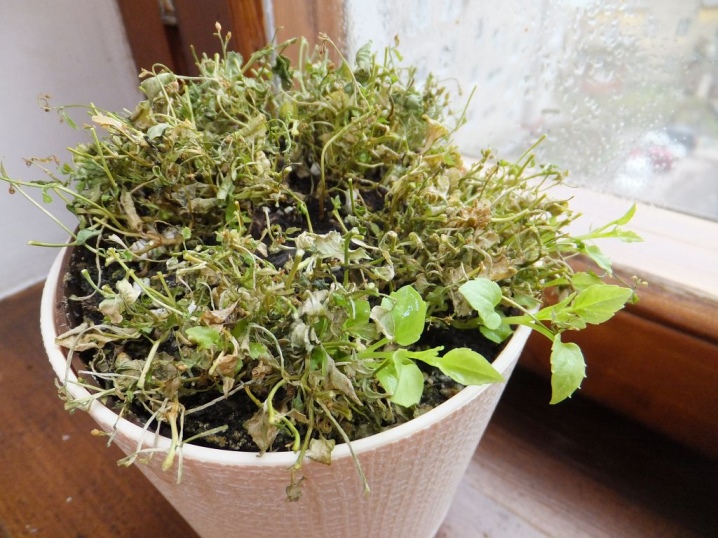
Of the pests, a spider mite or a scabbard can colonize Campanula. The spider mite is especially dangerous, since it is almost impossible to notice it in the early stages. The leaves of the flower begin to dry more and more, die off, and if the fight against the pest is not started in time, the plant dries up completely and dies.
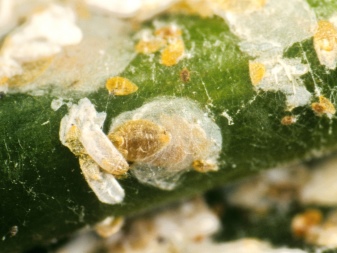
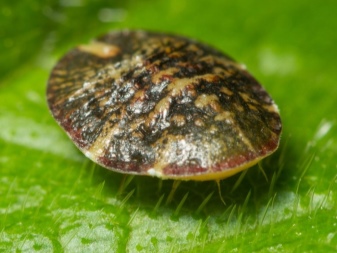
The first sign of tick damage is the appearance of small dots on the leaves. At first they are small in size, then they become larger and larger. Such points appear in places where the tick sucked sap from the leaf, and gradually the plant dries up. And you can also notice a small cobweb on the bottom of the sheet. The insect itself is so small that it is almost impossible to see it with the naked eye. To get rid of a tick in a street flower garden, you will need 2 insecticide treatments with an interval of 14 days. Aktara or another drug will do.

If the plant shows signs of tick activity in flower pots, then you need to immediately isolate this plant and also carry out two treatments with "Aktara".

Reproduction
Bells can be propagated in three ways - cuttings, seeds and dividing the bush.
- Division of the bush. To separate, take a knife, cut the roots of the plant into pieces, so that from one bush you get 2-3. Then coat the slices with chopped charcoal. Plant the delenki in pots, but do not deeply deepen. Care as for ordinary bells.
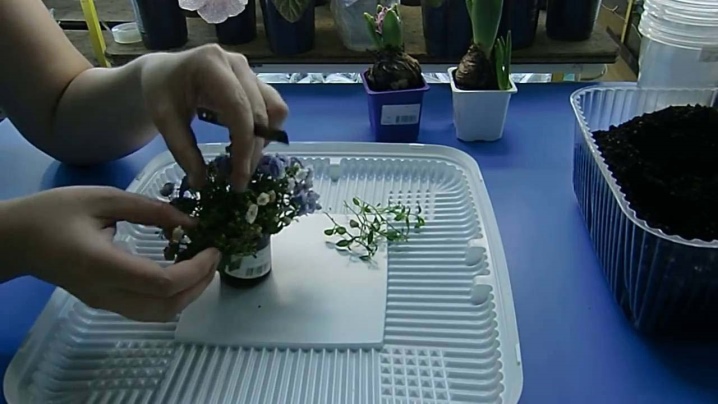
- Growing from seeds. Plant the seeds at a shallow depth in early spring, spray with a sprayer. Build a greenhouse from a jar or plastic bag over the pot. Open it once a day for 10 minutes for 3 weeks. Then plant the grown plants in different pots.
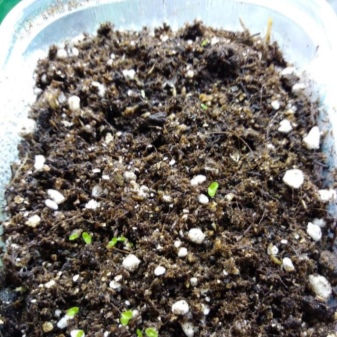
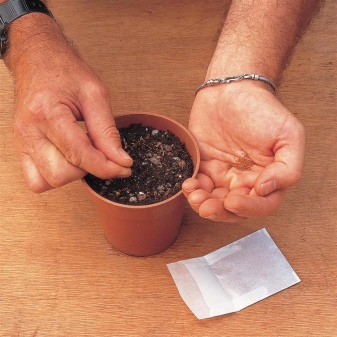
- Cuttings. Cut the lower stems from the plant, treat the cut with potassium permanganate and leave for 8 hours. Then place the cuttings in water and hold until roots appear. After that, plant the cuttings in pots of soil and grow as usual.
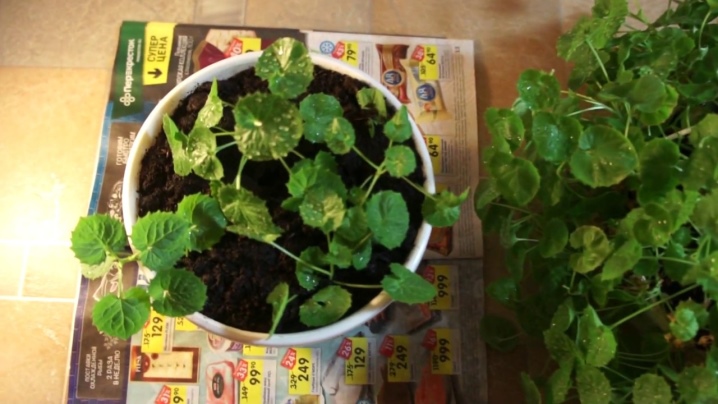
Examples in landscape design
Bells are widely used by designers to create various compositions in the garden. Low-growing varieties are especially popular. They are used in rockeries, to decorate borders. Bells work well as a carpet plant, in the middle of a flower bed and in combination with mallow and fern.
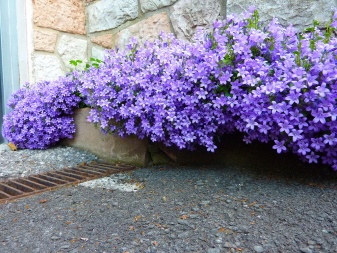

Campanula is often used to decorate the facades of a building or a veranda - they are planted in hanging flowerpots.
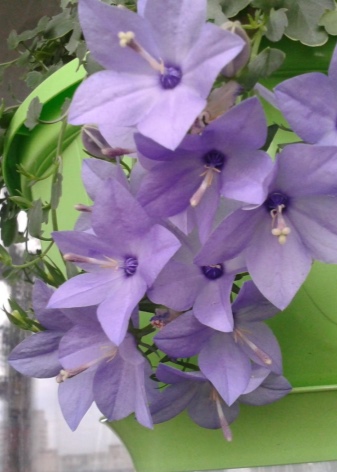

You can learn more about Terry Campanula from the video below.







































































































The comment was sent successfully.